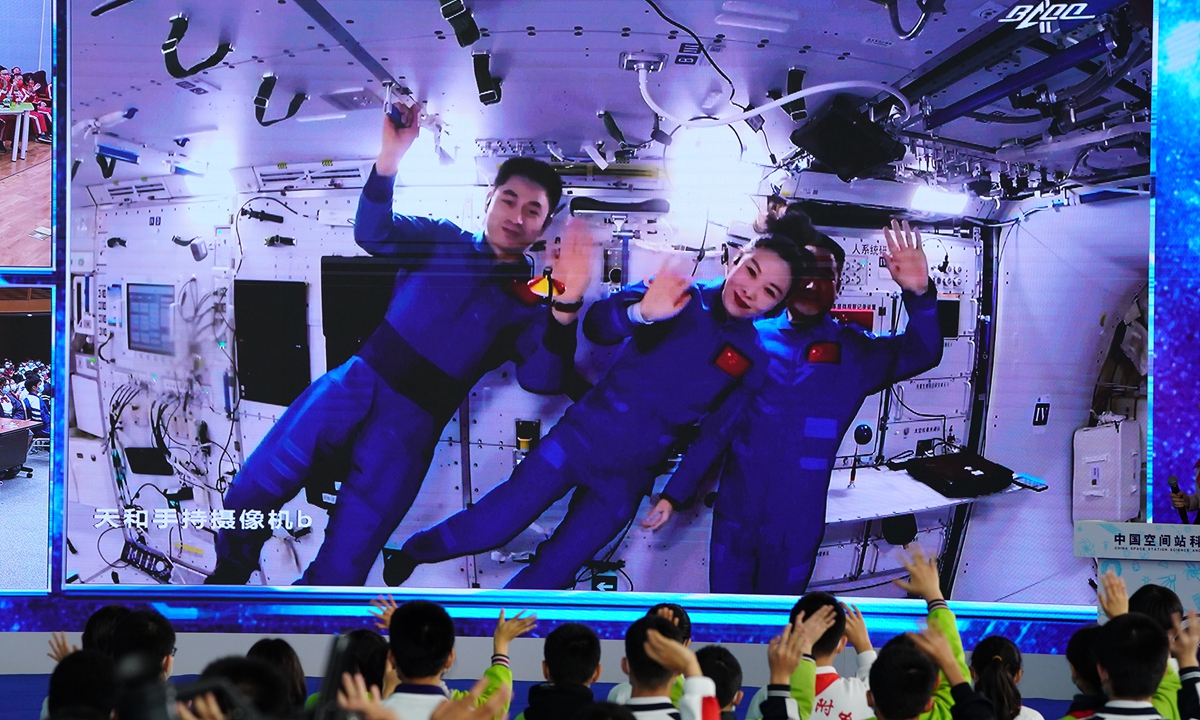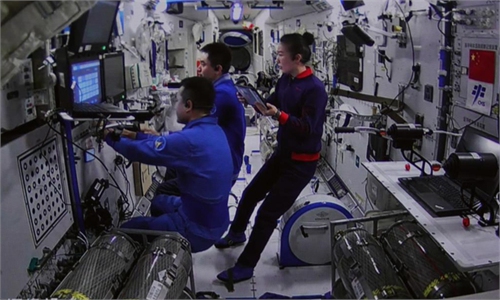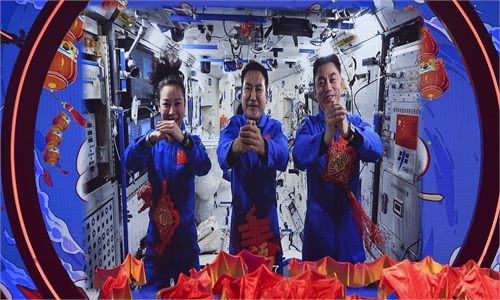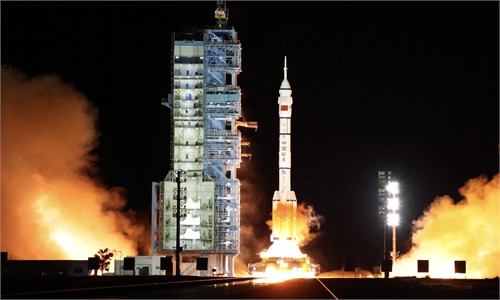
The first "Tiangong class" Photo: Fan Wei/GT
A month before the three taikonauts in China's "space home" conclude their six-month mission, the Shenzhou-13 crew will soon give their second live lecture from the country's Tiangong space station, taking public questions with content carefully designed to take into account the facilities in Tiangong, the Global Times learned from the China Manned Space Agency (CMSA) on Tuesday.
The second "Tiangong class" will include space science popularization, space-Earth comparison experiments, and space phenomena, according to CMSA. The Chinese public can leave messages on the CMSA's WeChat or Weibo accounts regarding their expectations for the class.
Some netizens wrote jokingly that they wanted to see the "space meal show" of the taikonauts, while others expressed their heartfelt wishes for a safe return of the crew to Earth.
It marks the first time that a mission crew delivers two lectures in space during China's space history. As the CMSA previously revealed, it will become routine for Chinese manned space missions to offer such lectures.
The first space lecture by the Shenzhou-13 crew was delivered on December 9, 2021 during a live broadcast, when a total of 1,420 students from Beijing, the Hong Kong and Macao special administrative regions, and several other provinces took part in video communication with the crew members.
The most impressive experiments conducted last time included a buoyancy experiment and surface tension test of liquid, as taikonaut Wang Yaping made a small film of water and put a folded paper flower she had made with her daughter on it, after which the pink flower unfolded and blossomed.
One of the key tasks for China's space workers is to make sure that communication links between the space station and the ground stay unobstructed, so that the video does not freeze or the pictures become unclear.
To deal with this, China's Tianlian-1 04 and Tianlian-2 -1 satellites - members of the new generation of the relay satellite family - have greatly increased their transmission speed, ensuring smooth Earth-space communication, Shan Changsheng, chief engineer with the Beijing Space Information Transmission Center, told the Global Times previously.
Since going into space last October, the Shenzhou-13 crew members have been in good health. They will return to Earth in mid-April, completing the first stage of the space station - a key technological verification stage, noted Yang Liwei, China's first astronaut and director of the China Manned Space Engineering Office.



